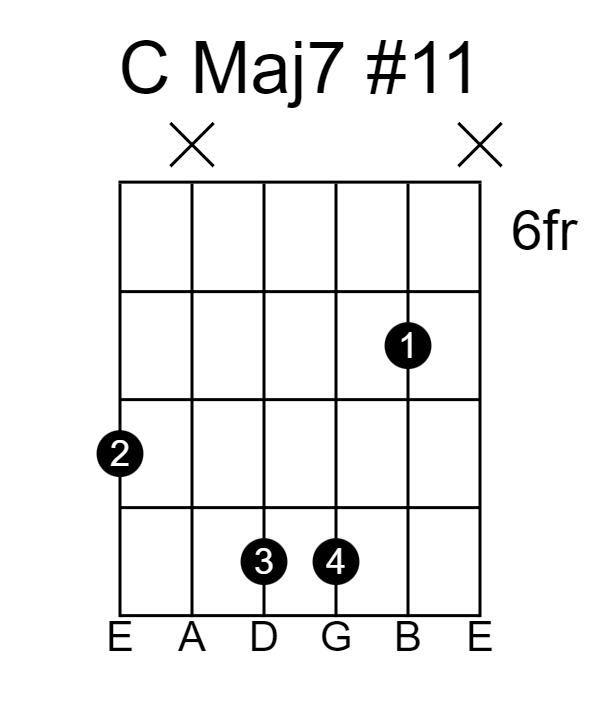Table of Contents
Sometimes we as guitarists need to add a little bit of flavor to our chords, and the best way to do that is with some beautiful intervals thrown into our regular mix of chords.
This way you’ll sound fresh, and you’ll sound like a pro! So, let’s learn some chords.
As a whole, here are my top 10 beautiful guitar chords, and how you can use them.
A Major 7
The Open A Major 7 shape is just like Open A Major, but you’ll drop the note on the G string down 1 fret.
This chord sounds best as a resolution/tonic chord in an A Major Scale chord progression.
It also sounds fantastic as a IV chord in the E Major Scale.

C Add 9
C Add 9 is a popular substitute for open C Major.
Use it in chord progressions from the C Major scale or G Major scale.

A Minor 9 (Or C Major 7)
This is an advanced way to play C Major 7.
It is the most beautiful major 7th inversion, in my opinion! As a matter of fact, this is my favorite chord of all time.
You can also look at this chord as an A Minor 9 if you incorporate the A note.
This chord works best in a progressive or jazz setting.
It’s an especially great chord in the key of E Minor, in my opinion.

E Add 9
E Add 9 is a beautiful substitute for an open E Major chord.
I love to use this in acoustic guitar playing, but you can use it in most genres.
Fun guitar fact: the band Steely Dan called these MU Chords.

One of my favorite guitar players, Shawn Lane, used this chord in the songs Aga of the Ladies.
D Sus 4
This is an incredible-sounding chord, and it works as a substitute for both D Minor and D Major.
You can find this chord in loads of famous songs, including Stairway to Heaven and Sweet Child O’ Mine.

C Minor 11
The Minor 11 chord is a great substitute for minor triads. The 11th interval gives it a very neutral, but beautiful sound.
Try moving this shape to other root notes. The root is on the low E string.

E Minor 9
This is one of the most popular jazz guitar chords. It is usually used as a ii chord, but can also used as the root chord (i).
Outside of jazz, it makes for a great substitute for an E Minor chord. This works best in the keys of E Minor and B Minor.

E Major 9
This is another popular jazz chord shape, and uses the same position as the E Minor 9 chord you learned above.
This chord works best as a resolution.

C Major 7 Sharp 11
The Maj7#11 chord can work as a substitute for a IV chord.
For example, you can use CMaj7#11 to substitute the C in the progression G-C-D.
This would give you G – Cmaj7#11 – D.
This works best in contexts outside of popular music, where you’re trying to build more tension.
This version of the Maj7#11 chord is rooted on the low E string. Try moving it to a different root note, such as G (on the 3rd fret low E).

C Major 13
This is one of the coolest barre chords on guitar!
It’s a huge sounding chord, and the shape is actually quite simple.
It’s hard to find beautiful 6-string chords that only stay on two adjacent frets, and this is definitely the best of them!
Be very picky when using this chord. It’s generally not great as an accompanying chord in jazz, but it can be an absolutely fantastic chord in solo guitar, and as a chord to end with.

Beautiful Guitar Chords Summary
You learned my top 10 beautiful guitar chords, and now you need to put them to work!
Start by substituting these chords for their regular major or minor shapes. Do this in progressions that you’re already familiar with!
You can find these chords used in a lot of jazz guitar backing tracks as well, so practice them in that context.
Try them out in your original compositions as well!
Thank you for reading!
Please check out the other articles or videos on the website, and get in touch if there’s anything you want me to write about on the blog!
Until next time, rock on!



